For all who didn't catch the first part of the trilogy about the Spanish capital Madrid and its surroundings, let me just quickly refer to the somewhat unusual title 5,4,3, Spain, Madrid. I want to present the 5 attraction of Madrid, four in the radius of 50 kilometres from the city and three in the radius of 100 kilometres from the city. This time, we'll be in the circle of less than 50 kilometres from the national capital of Spain and visit the places: Aranjues, Chinchon and Alcala de Henares, but let us start with the Benedictine Abbey of the Holy Cross of the Valley of the Fallen.
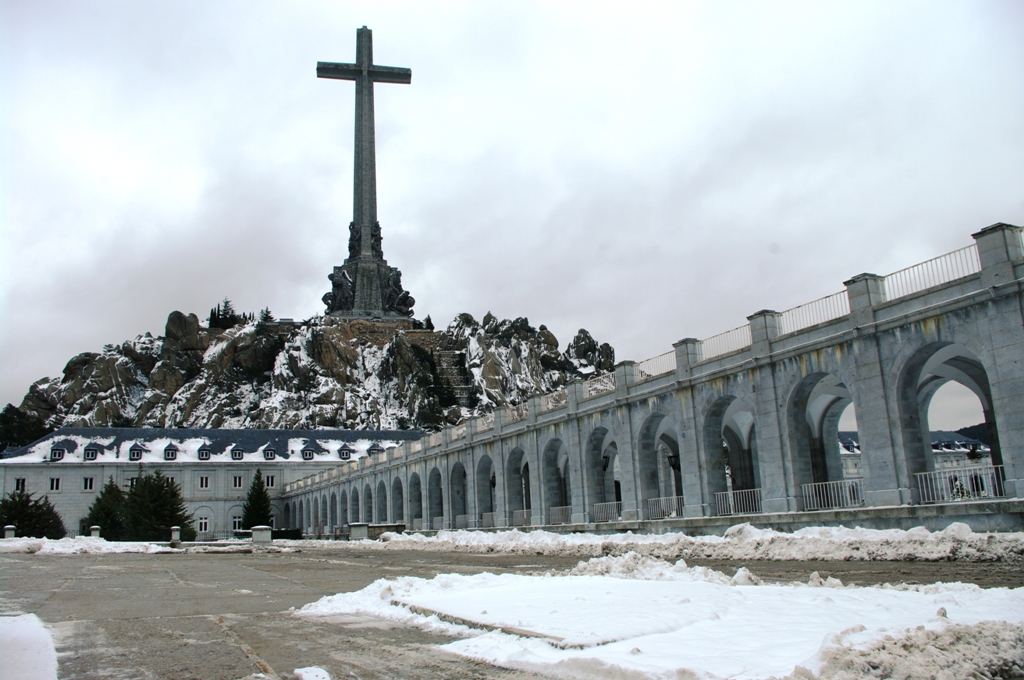
The basilica with a 150m tall cross to which you can get by cable cart, and which can be seen for 30 kilometres away, is one of the most controversial Spanish monuments. The very idea behind it was controversial, as Franco wanted it to be the monument and tomb to the fallen soldiers of the Spanish civil war, which would symbolize the repentance and reconciliation. The fact that political prisoners had to help build it, the opposition to the dictator’s Franco’s regime, is only the tip of the iceberg about the doubts of the seriousness of the attempt at reconciliation. The construction lasted almost two full decades (from 1940 to 1959) and was financed from the profits of the national lottery. The basilica as Pope John XXIII called the underground crypt in 1960, is even bigger than the basilica of St. Peter in Rome. The megalomaniac structure was designed by Spanish architects Pedro Muguruza and Diego Méndez, and is a landmark of Spanish architecture of the 20th century. It’s an underground structure inside a hill, on top of which there is a 150m tall cross, showing the grand design together with the arched entrance. The central part of the basilica has two graves inside, one being the grave of the founder of the phalanx - José Antonio Primo de Rivera and the second being the grave of Francesco Franco, the only one, who did not die during the civil war, but is still buried in the Valley of the fallen. Despite his wishes of being laid to rest in the national capital, the family agreed in 1975 that he should be buried in the basilica. Even the church agreed to the exception and allowed Franco to be buried with others, who have died in the civil war. The church explained that its founder and promotor has the right to be laid in it to rest. The controversy, however, got even bigger, because now Spain has a national monument, where its dictator, who’s caused such a split and hardship in the land, is laid to rest with all the honours. A former Catalonia politician Jaume Bosch compared the monument, for The Times, with the Nazi concentration camps and wanted to prevent it to become a gathering place of Franco’s worshipers. It is still, however, a part of Spanish history, with Bosch does not deny. The basilica was closed for quite some time, for the renovations, and is now opened again, still causing a split in Spanish politics, which the dictators successfully seeded.
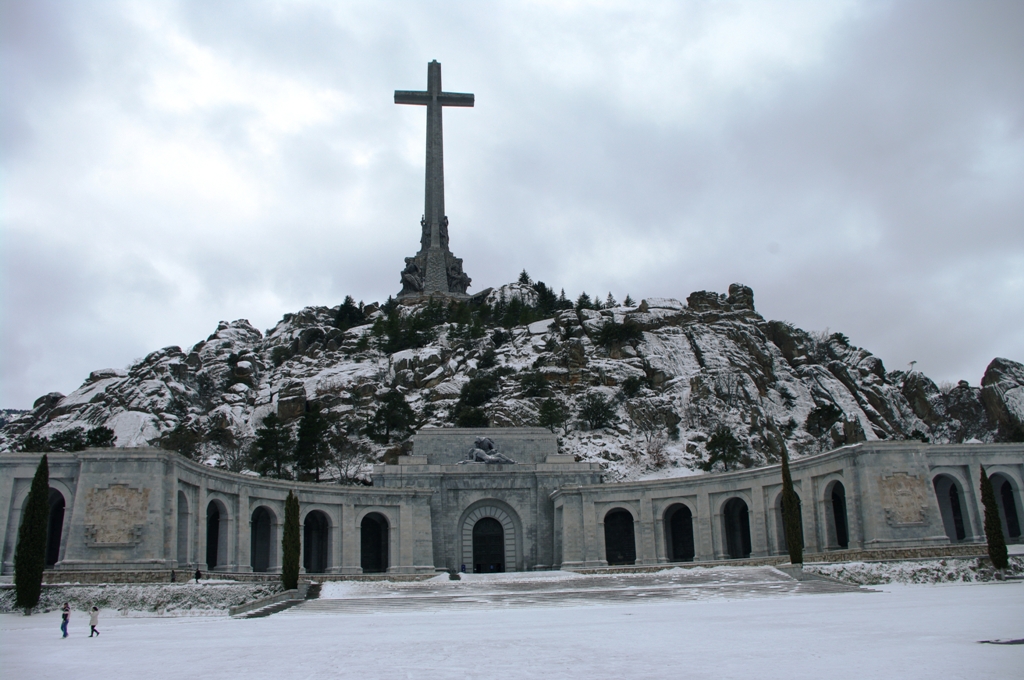
You can visit the basilica, but it’s a part of a strictly secure area of over 13 square kilometres. The first check point is at the entry with the Benedictine Abby, but you’ll go through a more thorough check before entering the basilica. The whole complex is just under 50 kilometres from Madrid and you can reach it through San Lorenzo de El Escorial, by public transport, where you take the bus number 660 from the square Plaza de la Virgen de Gracia. You can also enter the area with a car, even beyong the first check point. Taking pictures, however, is not allowed, without the previous consent of the Patrimonio nacional. You can visit from Tuesday to Sunday between 10AM and 6PM (between April and September until 7PM). Entrance costs 9€, but students (under 25) and youth under 16 pays only 4€.
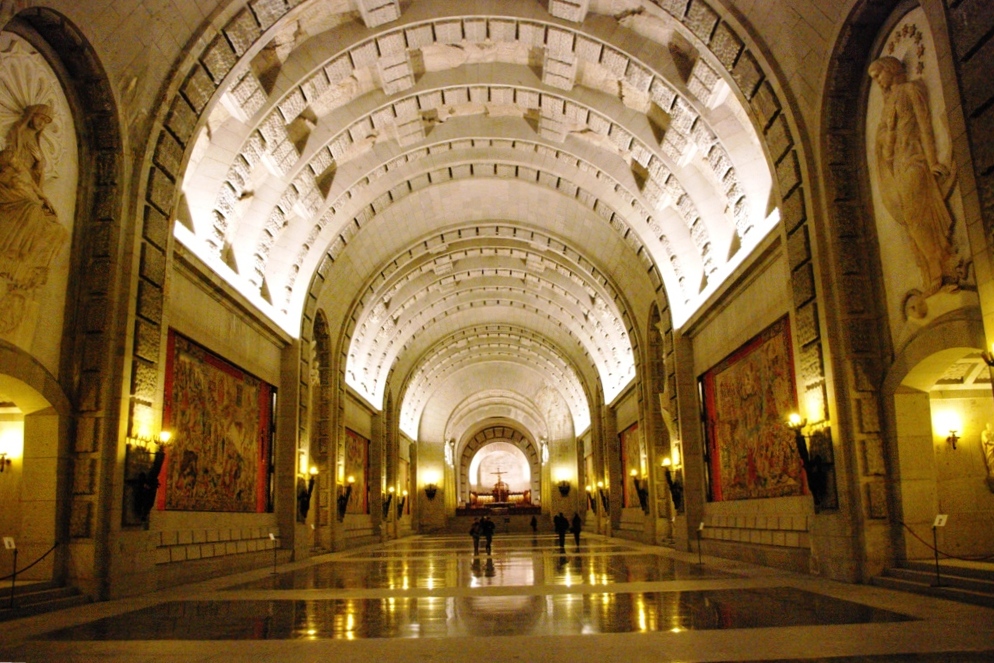
Alcalá de Henares is the second of four sites I’d suggest for a day trip. Unlike the basilica in the valley of the fallen, which will never make it to the UNESCO heritage list due to the controversy of its meaning, the Alcalá de Henares has already reached the list in 1998. It’s 35 kilometres east of Madrid, with great connections and historical buildings in the city centre. It has the population of 200.000, but the history centre can be easily explored on foot. The world renowned university of Salamanca is at the very heart of the city since 1293, maing it one of the oldest universities in the world. There’s also a Jewish quarter from the 14th century and the city cathedral. You can also see the palace of the archbishop, walk along the monastery walls, visit some of the great archeological museums, a museum of sculptures, or even see the Complutum forum of the Roman Empire, which predates the current city.
Apart from individual attractions, there are more than I’ve named, the city gets a special atmosphere from its squares and streets, where you must walk through, especially the main street - "Calle Mayor" – from the main square to the west gate. You can reach Alcalo de Henares from Madrid by rails, from the main station Atocha, and some others, or by bus from "Avenida de America," take the numbers 223,227 or 229; N202 if at night.
The next suggestion is a town of Chinchon, with no more than 5000 people, but it’s the tiny size that makes it big! It’s 45 kilometres south-east from Madrid and once you get to the main square, you’ll feel not only you’ve travelled through space, but also time. The "Plaza Mayor", surrounded by 2 and 3 story buildings with typical Spanish balconies, ground floor restaurants and shops, is like something of the past. There’s also the tourist info centre there, to tell you all you need to know and see in Chinchonu.
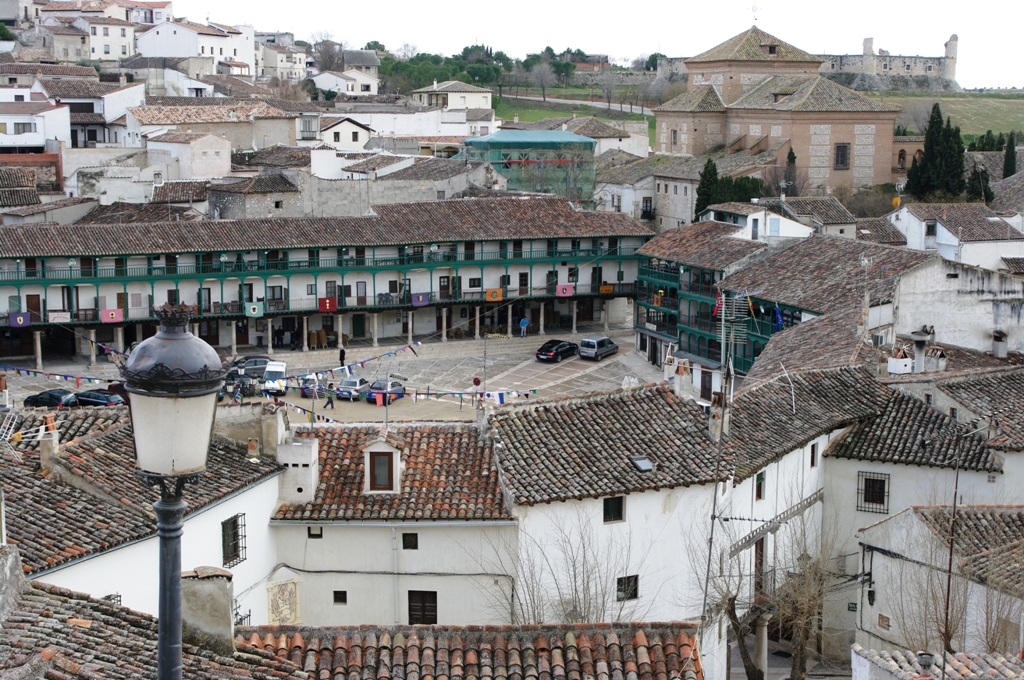
Just the walk on the streets of the city is an experience of its own, but you should visit some sites. First would deffinetly be the central church of "Iglesia de la Asuncion" above the main square. From thenext site you’ll have a great view of the landscape and the town. It’s the renaissance castle from the 16th century, but the "Castillo de los Condes" is not open to public. Next you should check out the ethnological museum. It’s in the Morata street, just out of the main square. As you well know, Spain still hosts bull-fights, and Chinchon is no exception. It’s on the town’s main holiday – the Fiesta Mayor – that takes place between August 12th and 18th that the romantic town square becomes the site of bloody entertainment, where the bull-fighting supportive people and some of the tourists can quench their blood thirst.
You can reach Chinchona from Madrid by bus 227 (stopping at Plaza Conde de Casal) about every hour. It’s a nice town, but including a lunch and dinner, you won’t need more than a day to explore Chinchona.
And last, but not least, I invite you to Aranjues, the royal city exactly 50 kilometres from Madrid. The town with 45.000 inhabitants has been on the UNESO list of heritage since 2001 and represents a special balance between the forces of men and nature. The parks and gardens connect the woods and palaces, so the town is also called the historical – cultural hub.
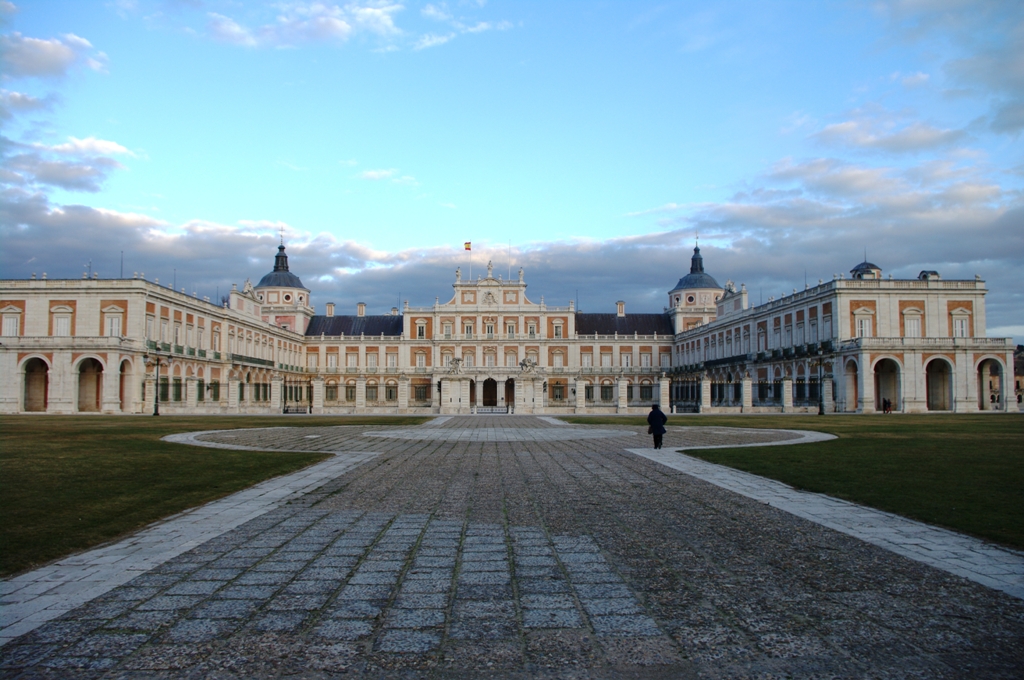
The first thing to see while in Aranjues is the royal palace, open from Tuesday until Sunday between 10AM and 6PM (until 7PM from April to September). The price of the ticket is 4,5€, but if you’re an EU citizen, you can enter free on Wednesdays. You should visit the biggest of the gardens - "Jardin del Principe" as well as "Jardin de la Isla", which are both free of charge. But personally, I preferred the town as a whole, than visiting single attractions within it. At the main square - Plaza de San Antonio – at house number 9, you’ll find the tourist information office, where you can find out everything you want to know about the town. If you take some time to organize what you want to see with what the town is offering, you can explore the town in a day. But you might want to stay longer as there are many things you can see or do here. In any case, I suggest you visit the central market, where you’ll find anything from sea fruit to brightly red tomatoes.
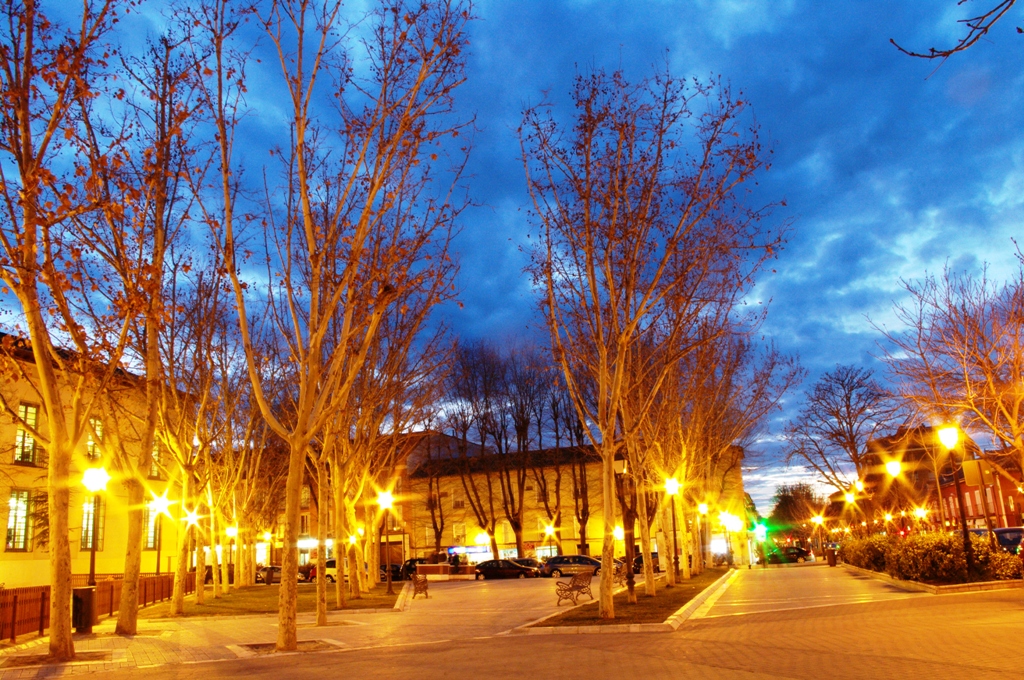
If you’re not by car, it’s best to reach Aranjues by rail, as this was the second rail connection built in Spain. A special experience is the so called " Tren de la Fresa" – the strawberry train – running on Saturdays and Sundays in May, June, September and October. It’s a museum train with a steam engine that starts from the Railroad museum in Madrid at 10AM and reaches Aranjues 50 minutes later, taking you back to the national capital at 6:25PM.